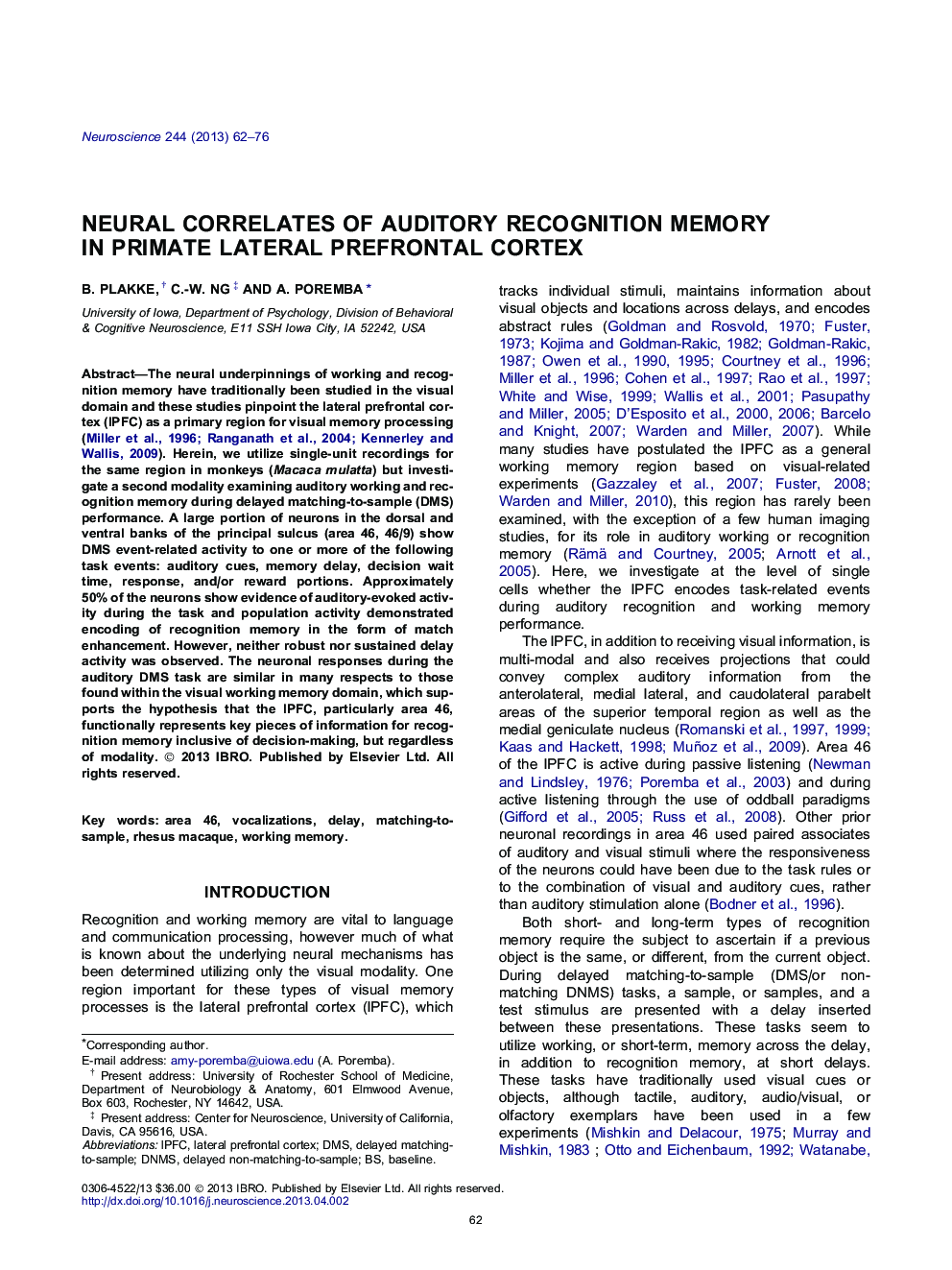| Article ID | Journal | Published Year | Pages | File Type |
|---|---|---|---|---|
| 4337927 | Neuroscience | 2013 | 15 Pages |
•We examine auditory recognition memory with a delayed matching-to-sample task.•We record from lateral prefrontal cortex cells and found task-related activity.•About 50% of cells were responsive to auditory stimuli.•This suggests prefrontal cortex is utilized for auditory recognition memory.
The neural underpinnings of working and recognition memory have traditionally been studied in the visual domain and these studies pinpoint the lateral prefrontal cortex (lPFC) as a primary region for visual memory processing (Miller et al., 1996, Ranganath et al., 2004 and Kennerley and Wallis, 2009). Herein, we utilize single-unit recordings for the same region in monkeys (Macaca mulatta) but investigate a second modality examining auditory working and recognition memory during delayed matching-to-sample (DMS) performance. A large portion of neurons in the dorsal and ventral banks of the principal sulcus (area 46, 46/9) show DMS event-related activity to one or more of the following task events: auditory cues, memory delay, decision wait time, response, and/or reward portions. Approximately 50% of the neurons show evidence of auditory-evoked activity during the task and population activity demonstrated encoding of recognition memory in the form of match enhancement. However, neither robust nor sustained delay activity was observed. The neuronal responses during the auditory DMS task are similar in many respects to those found within the visual working memory domain, which supports the hypothesis that the lPFC, particularly area 46, functionally represents key pieces of information for recognition memory inclusive of decision-making, but regardless of modality.
